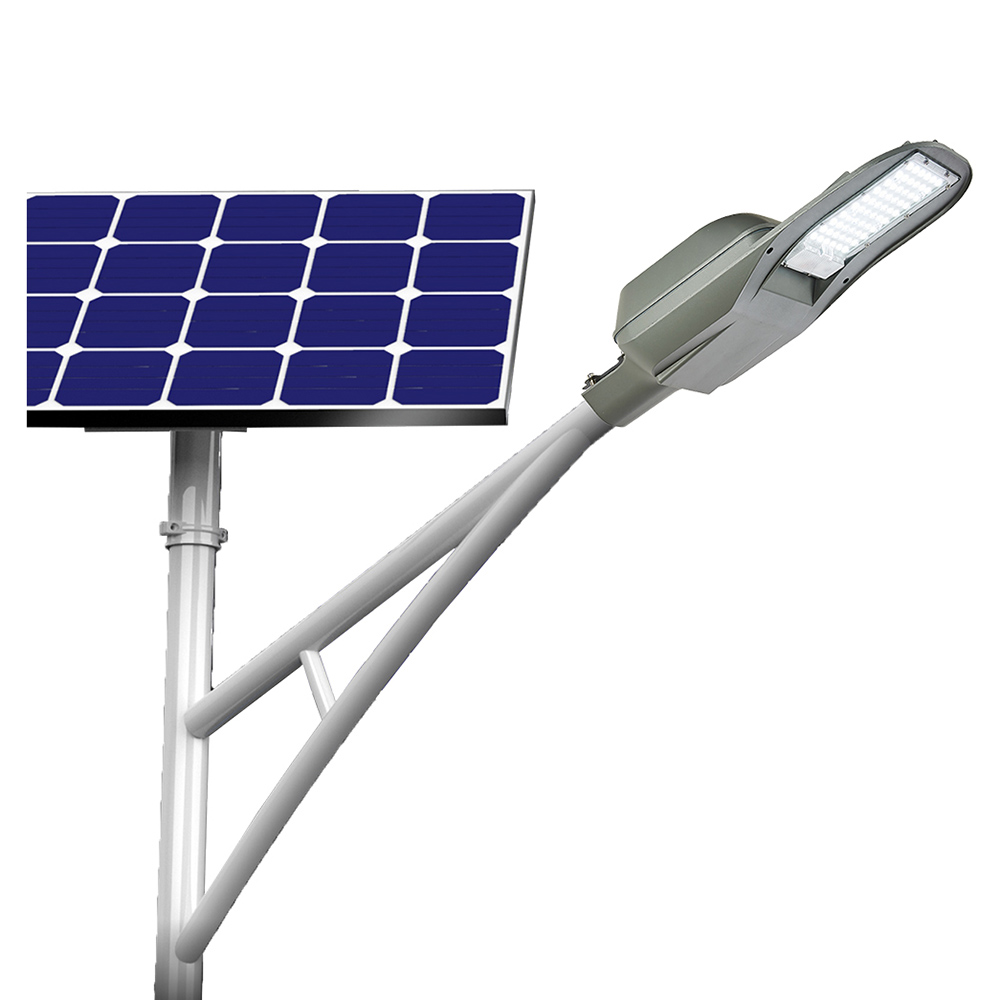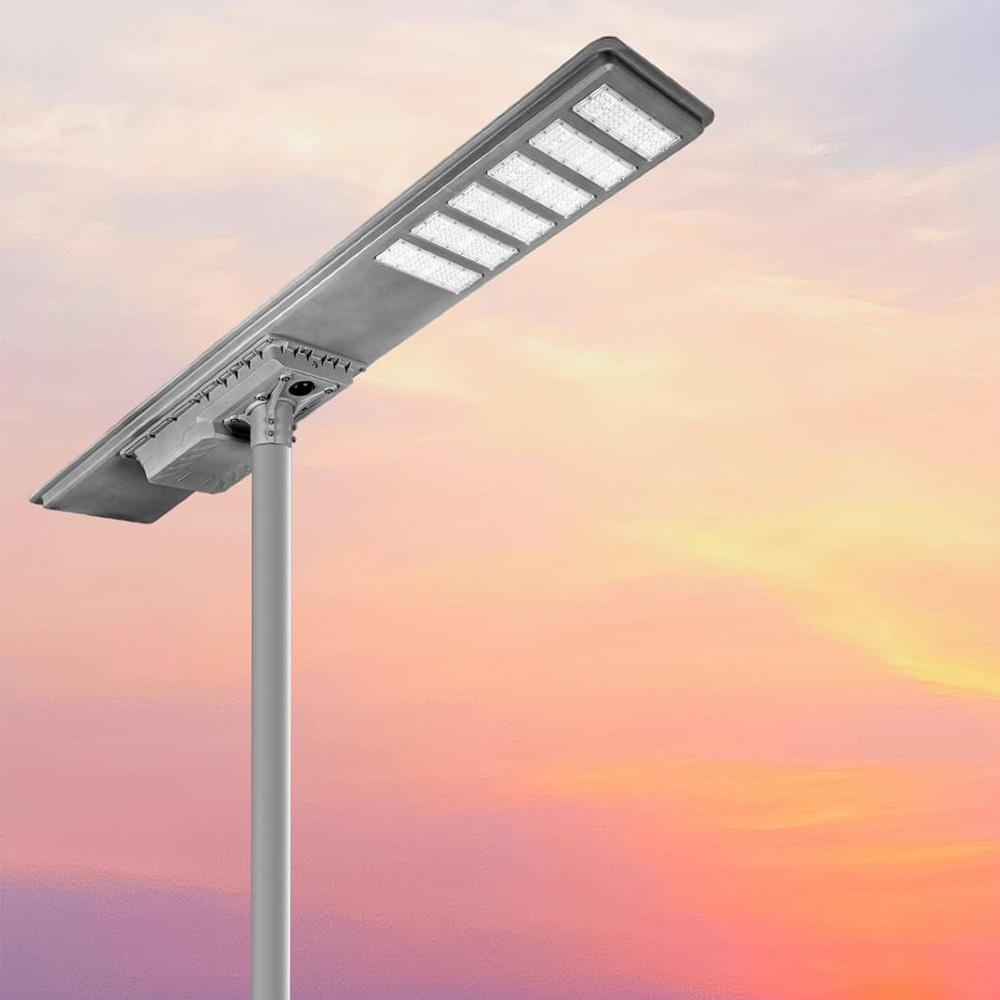Common Installation Mistakes to Avoid in Solar Street Lighting Projects
Discover the most common solar street light installation mistakes and learn how to avoid them. Ensure long-term efficiency, safety, and performance for your solar lighting project.
Installing solar street lights offers numerous benefits—sustainability, low maintenance, and cost-efficiency—but improper installation can lead to performance failure, safety risks, or additional costs. In this article, we’ll outline the most common installation mistakes and offer expert tips to ensure a smooth, effective solar lighting setup.

1. Incorrect Positioning of the Solar Panel
Issue: Panels not facing the sun or being shaded by trees, buildings, or poles reduce charging efficiency.
Solution:
- Face panels true south (in the Northern Hemisphere) or true north (in the Southern Hemisphere).
- Install panels in open, unobstructed areas with full-day sun exposure.
- Use a compass or solar pathfinder for accurate orientation.
2. Wrong Tilt Angle
Issue: Incorrect tilt angle affects solar absorption.
Solution:
- Set the tilt angle approximately equal to the location’s latitude.
- Consider adjustable mounts for seasonal optimization.
- Avoid flat installations unless specifically designed for it.
3. Poor Battery Compartment Ventilation
Issue: Batteries overheat if sealed without airflow.
Solution:
- Ensure proper ventilation for battery compartments.
- Use high-quality, sealed, temperature-tolerant batteries.
- Consider underground or pole-integrated thermal protection solutions.
4. Insufficient Foundation and Mounting Stability
Issue: Poles may tilt or collapse during strong winds.
Solution:
- Follow engineering standards for depth and materials.
- Use galvanized bolts and anti-corrosion components.
- Deepen foundations in sandy or soft soil areas.
5. Incorrect Wiring and Loose Connections
Issue: Can lead to failure or damage to components.
Solution:
- Use waterproof connectors and secure insulation.
- Verify all connections before powering on.
- Label wiring clearly, especially in large systems.
6. Inadequate Spacing Between Lights
Issue: Causes dark zones or overlapping lights.
Solution:
- Use a lighting layout plan based on lumen requirements.
- Consult with professionals or use design tools.
7. Neglecting Site-Specific Conditions
Issue: Structural or performance issues may arise.
Solution:
- Customize systems for local wind, soil, and climate conditions.
- Use corrosion-resistant materials where necessary.
8. Skipping System Testing After Installation
Issue: Misses hidden faults that appear later.
Solution:
- Test full system: charging, sensors, duration, etc.
- Monitor for at least 2–3 nights post-installation.
- Use a checklist for commissioning.
9. Using Incompatible or Low-Quality Components
Issue: Leads to inefficiencies or failure.
Solution:
- Stick with components from the same certified manufacturer.
- Choose reliable suppliers like Guangdong Queneng Lighting Technology Co., Ltd.
Conclusion
By avoiding these common mistakes, you ensure your solar street lighting system operates efficiently and reliably for years. Proper planning and expert installation are the keys to long-term performance and ROI.

FAQ – Solar Street Light Installation
Q1: How do I know the best direction for my solar panel?
A: Use a compass to face the panel true south (in the Northern Hemisphere) and ensure it's not shaded.
Q2: Can I install a solar street light by myself?
A: While it's possible for basic models, professional installation is strongly recommended.
Q3: What foundation is needed for a solar street light pole?
A: Typically a concrete base at least 1.5 meters deep, depending on soil and pole height.
Q4: Why is my solar street light not working even after a sunny day?
A: Check for loose wiring, shaded panels, battery issues, or faulty sensors.
Q5: What tools can help with installation?
A: Solar alignment apps, inclinometers, voltmeters, waterproof connectors, and wrenches.

Have more questions about our products or services?
The latest hot news you might like

Discover how solar panels power street lights, exploring the technology behind solar energy conversion, storage systems, and how solar-powered street lights are revolutionizing urban and rural lighting solutions.

Learn how AC Solar Hybrid Street Lights work, their advantages, disadvantages, system behavior in low-sunlight conditions, and why hybrid technology is ideal for regions with unstable sunlight.

Municipalities around the world are increasingly adopting solar-powered streetlights as part of their urban development strategies. Rising energy costs, the need for sustainable infrastructure, and government green initiatives are driving cities to switch from traditional street lighting to advanced LED solar streetlights.
Queneng Lighting provides municipalities with cost-effective, energy-efficient, and durable solar lighting solutions, ensuring safe and sustainable public spaces.

In recent years, the purchase of solar streetlights for municipalities has become a growing trend across the globe. Local governments are under pressure to reduce public expenditure, promote green energy, and create safer communities. Solar streetlights provide a reliable, cost-effective, and sustainable solution that meets these needs. Queneng Lighting, as a leading solar street lighting manufacturer, has supported multiple municipal projects worldwide with customized and energy-efficient solutions.
FAQ
Solar Street Light Luxian
What are the primary benefits of using Luxian solar street lights for outdoor lighting?
Luxian solar street lights offer several key benefits, including energy savings, environmental friendliness, and independence from the electrical grid. They use solar energy to power LED lights, reducing electricity costs while providing reliable, high-quality lighting for outdoor spaces. The durable construction and low maintenance needs make them ideal for long-term use in various outdoor environments.
Solar Street Light Lufeng
What type of LED technology does Lufeng solar street lights use?
Lufeng solar street lights use advanced LED technology, which provides bright, high-quality illumination while consuming less power compared to traditional street lights. LEDs are more energy-efficient, have a longer lifespan, and require less maintenance, making them ideal for outdoor lighting applications.
Schools and Educational Institutions
Can solar lights be used in cold climates?
Yes, our solar lights are designed to work in various weather conditions, including cold climates, with some models performing well at temperatures as low as -20°C.
Public Gardens and Landscape Lighting
How can I order solar lighting products for my public garden or landscape project?
To order solar lighting solutions for your project, simply contact our sales team via phone, email, or our website. We will work with you to understand your specific requirements and provide customized solutions that fit your needs. We also offer installation support and after-sales services to ensure your project is a success.
Solar Street Light Luqing
Can I install Luqing solar street lights myself, or do I need a professional?
Luqing solar street lights are designed for easy installation, typically requiring no special tools or external wiring. Most installations can be done by a homeowner or contractor with basic knowledge of outdoor lighting, but professional installation is always an option for more complex setups.
APMS system
What is the APMS Smart Charge and Discharge Management System?
APMS (Advanced Power Management System) is an intelligent charge and discharge management system developed by QUENENG that optimizes lithium battery charging and discharging with a dual-system management mode, ideal for demanding lighting and power needs.

Introducing the Luqing Solar Street Light by Queneng, Efficient LED lighting powered by solar energy is perfect for illuminating outdoor areas. Harness the power of solar energy for sustainable, reliable street lighting. Ideal for eco-friendly, cost-effective outdoor illumination solutions.
If you would like more information about Queneng solar lighting solutions, please send us a message by filling out the form below. Our professional team will get back to you within 24 hours!
Rest assured that your privacy is important to us, and all information provided will be handled with the utmost confidentiality.
Schedule a Meeting

Book a date and time that is convenient for you and conduct the session in advance.
Have more questions about our products or services?



















